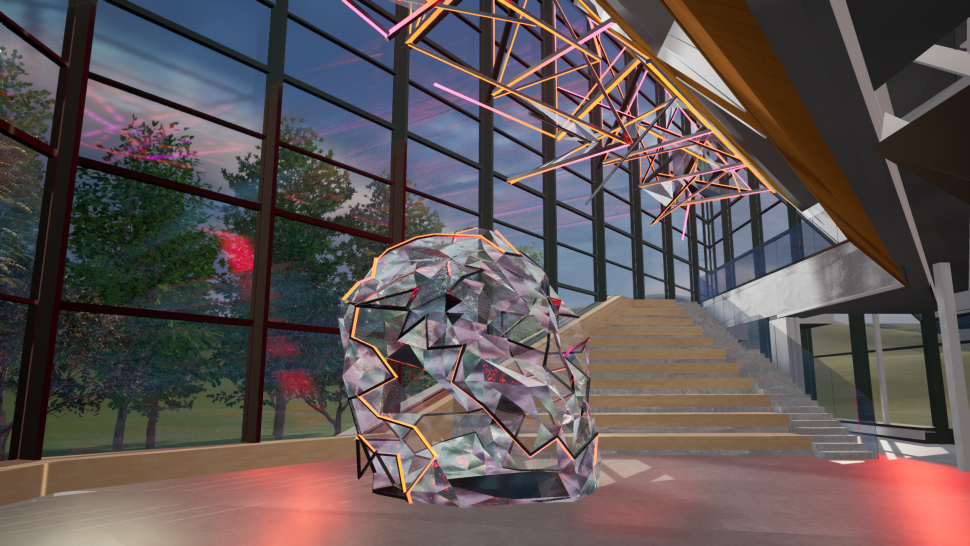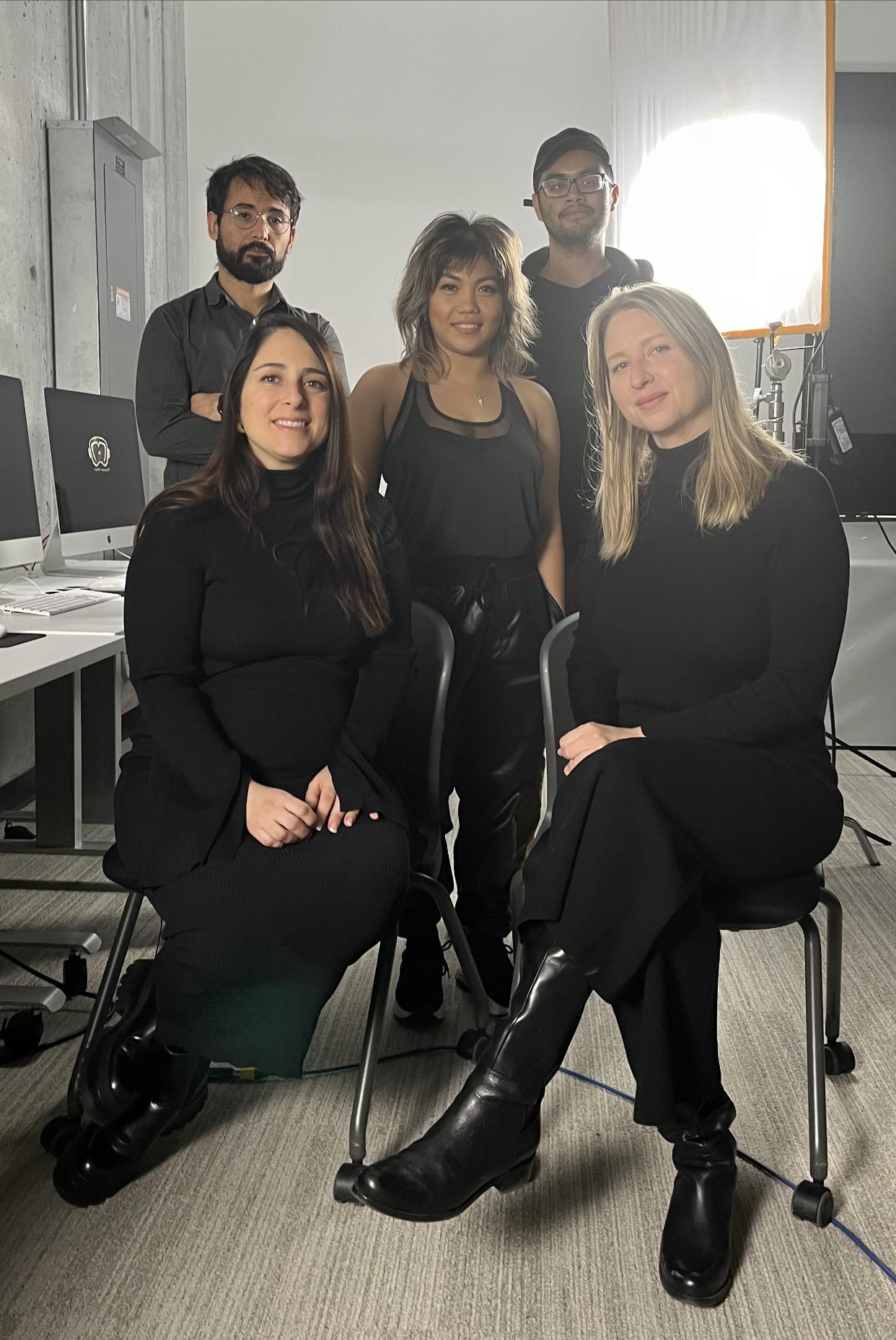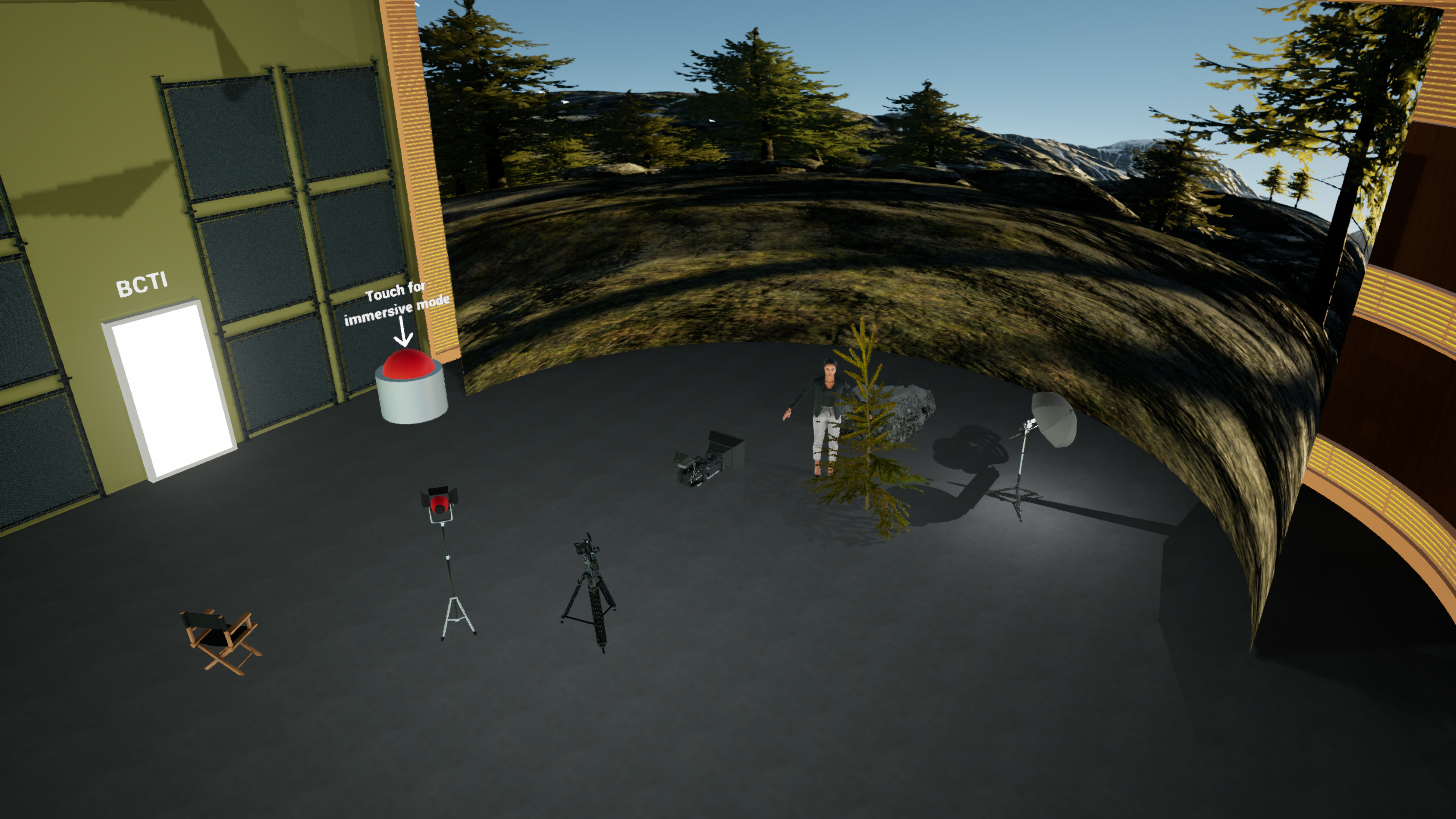
A pair of Humber College professors are exploring the educational potential of the metaverse through a project that created a virtual, immersive environment.
Eva Ziemsen is a professor with the Faculty of Media and Creative Arts’ Bachelor of Film and Media Production program and Elizabeth Fenuta is a program coordinator and professor with the Faculty of Applied Science and Technology’s Architectural Technology program.
The two, along with several students and a software engineer, collaborated on a project they call Harnessing the Metaverse in Higher Education. They used Unreal Engine software and other programs including Twinmotion and Revit to produce a prototype of a virtual, immersive, multi-user educational environment for the fields of architecture and virtual production, which is an evolved pipeline in film production.

The project will allow users to teleport to the real-time Unreal Engine environment displayed on the LED wall, letting them be immersed in the 3D environment of their story for further ideation and directorial prep work.
Users can also enter a digital twin, which is a 3D digital replica of the Barrett Centre for Technology Innovation (Barrett CTI) where they can meet, communicate, ideate, collaborate and explore architectural aspects of the virtual space that don't exist in the real world.

"This is really a demonstration of what the metaverse can allow us to do,” said Ziemsen. “The project allowed two disciplines that historically don't collaborate to come together to create new spaces where we can build, explore, learn, and make mistakes. It has allowed for unprecedented creativity and the ability to achieve things that were previously impossible in the physical world."
Fenuta said creating virtual space is beneficial for her students for many reasons. Physical location is no longer an impediment to working collaboratively and it allows the students to realize their designs in full scale. Reducing costs is another benefit of working in the virtual realm.
“Socioeconomic status is no longer a barrier,” said Fenuta, adding her students aren’t constrained by the cost of materials when working virtually.
Elijah Alejandro, a Bachelor of Interior Design student, optimized a 3D virtual model of the Barrett CTI and focused on ensuring the materials and textures used in the virtual world matched those of the actual physical space as well as designing an original installation.
“Working with the game programmers on this project gave me a new perspective while experiencing the integration of gaming and interior design,” said Alejandro.
Both Ziemsen and Fenuta are passionate about women playing a role in the Metaverse’s development and have built the values of equity, diversity and inclusion into the project.
“The building industry, film and now the metaverse, are male-dominated industries,” said Fenuta. “We have really made a point to say women need to be part of the building of the metaverse.”
As technology evolves and more creative talents enter the metaverse, Ziemsen and Fenuta are working to ensure Humber students are well-positioned to explore the yet to be imagined possibilities and opportunities the virtual world presents.